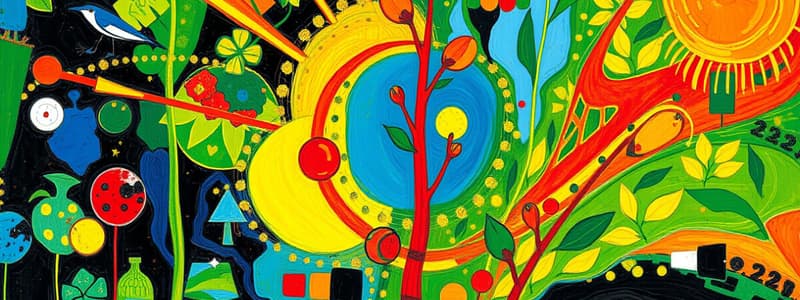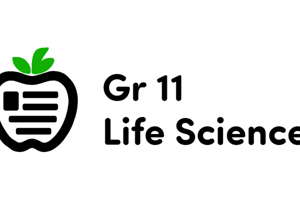Podcast
Questions and Answers
What are the sources of energy for organisms?
What are the sources of energy for organisms?
- Respiration
- Chemosynthesis and photosynthesis (correct)
- Decomposition
- Fermentation
What is the process where organisms use chemical energy to produce sugars?
What is the process where organisms use chemical energy to produce sugars?
chemosynthesis
What process uses energy from the sun to produce sugars?
What process uses energy from the sun to produce sugars?
photosynthesis
What captures energy from the sun to make sugars?
What captures energy from the sun to make sugars?
What type of organisms are known to absorb visible light?
What type of organisms are known to absorb visible light?
What does the color you see indicate about a pigment?
What does the color you see indicate about a pigment?
Visible light has a...
Visible light has a...
What is the role of pigments in plants?
What is the role of pigments in plants?
What are the two main types of chlorophyll?
What are the two main types of chlorophyll?
What is an accessory pigment found in plants?
What is an accessory pigment found in plants?
What pigment is yellow/orange in color?
What pigment is yellow/orange in color?
Which pigment absorbs mostly red and blue light?
Which pigment absorbs mostly red and blue light?
What does chlorophyll reflect back?
What does chlorophyll reflect back?
What organelle in plant cells is needed for photosynthesis?
What organelle in plant cells is needed for photosynthesis?
What feature do chloroplasts have?
What feature do chloroplasts have?
What are the two parts of chloroplasts?
What are the two parts of chloroplasts?
What is the singular form of grana?
What is the singular form of grana?
What are stacks of membrane-bound enclosed compartments in chloroplasts called?
What are stacks of membrane-bound enclosed compartments in chloroplasts called?
What do the membranes of thylakoids contain?
What do the membranes of thylakoids contain?
What is the fluid that surrounds the grana in chloroplasts?
What is the fluid that surrounds the grana in chloroplasts?
Flashcards are hidden until you start studying
Study Notes
Energy Sources
- Chemosynthesis and photosynthesis serve as primary sources of energy for organisms.
- Chemosynthesis involves the use of chemical energy to produce sugars.
- Photosynthesis utilizes energy from sunlight to synthesize sugars.
Photosynthesis
- Photosynthesis is the process where producers absorb visible light to create sugars.
- Plants capture solar energy, converting it into chemical energy through photosynthesis.
- Chlorophyll is crucial in absorbing primarily red and blue light for the process of photosynthesis, while reflecting green light.
Pigments in Plants
- The visible color of a pigment indicates the specific wavelength of light it reflects while absorbing others.
- Chlorophyll a and b are the two main types of pigments found in plants.
- Accessory pigments, such as carotenoids, also facilitate the absorption of light, primarily responsible for yellow and orange hues.
Chloroplast Structure
- Chloroplasts are organelles found in plant cells essential for photosynthesis.
- They have a double membrane structure, protecting and enclosing their internal components.
- The chloroplasts consist of two main parts: grana (stacks of thylakoids) and stroma (the surrounding fluid).
Grana and Thylakoids
- Grana are singular stacks of thylakoids, which are membrane-bound compartments where the light-dependent reactions of photosynthesis occur.
- The thylakoid membranes contain chlorophyll and other pigments necessary for capturing light energy.
Stroma
- Stroma is the fluid surrounding the grana within chloroplasts, where the light-independent reactions (Calvin cycle) take place.
Studying That Suits You
Use AI to generate personalized quizzes and flashcards to suit your learning preferences.




